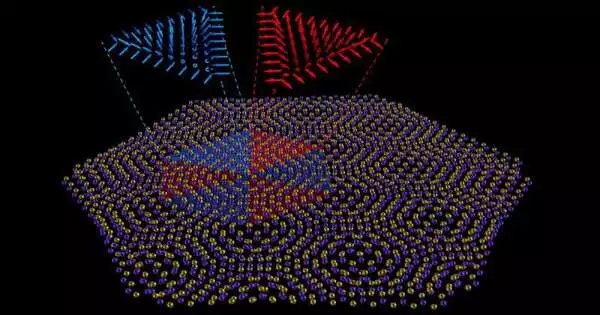Using a new platform for topological physics research in nanoscale devices, Cambridge researchers have identified a novel topological phase in a two-dimensional system.
In physics and materials science, two-dimensional materials like graphene have been used as laboratories for the experimental discovery and theoretical comprehension of a wide range of phenomena. Numerous 2D materials with various physical characteristics exist in addition to graphene. This is encouraging for potential applications in nanotechnology, where a variety of functionality can be added to devices by combining various 2D materials or layer stacks.
Recent research has shown that ferroelectricity develops when one layer slides over another and breaks symmetry in materials like hexagonal boron nitride (hBN), which is less symmetric than graphene. A useful property for processing information and storing memories is ferroelectricity, which is the switching of a material’s electric dipole moment with an electric field.
“In twisted systems, the polarization is perpendicular to the layers and points in an out-of-plane direction.”
Dr. Daniel Bennett, who started this project at the Cavendish Laboratory.
A moiré superlattice is an exquisite interference pattern that forms when two-dimensional materials are twisted with respect to one another; this pattern can significantly alter the physical properties of the materials. Twisting hBN and related materials causes the various stacking regions to become polarized, resulting in a regular network of polar domains and ferroelectricity, which has been demonstrated.
Researchers from the University of Liège in Belgium and the Cavendish Laboratory in Cambridge have found new information about the polar domains that had previously gone unnoticed: they are naturally topological and form objects known as merons and antimerons. This new research was published in Nature Communications.
The first author, Dr. Daniel Bennett, who began this project at the Cavendish Laboratory and is now based at Harvard University in the United States, stated that the polarization in twisted systems points in the out-of-plane direction, which is to say perpendicular to the layers. S.
We discovered that the symmetry breaking brought on by sliding or twisting also produces an in-plane polarization with a strength comparable to the out-of-plane polarization. The symmetry of the layers completely dictates the shape of the lovely vector field that the in-plane polarization forms.
The in-plane polarization finding demonstrates that the electrical characteristics of 2D twisted systems are much more intricate than previously believed. More importantly, combining both the in-plane and out-of-plane parts of the polarization, the team realized that the polarization in these twisted bilayers is topologically non-trivial.
According to Dr. Robert-Jan Slager, whose team at the Cavendish Laboratory worked on the study, “In each domain, the polarization field winds around by half a revolution, forming a topological object known as a meron (half a skyrmion).”. There develops a strong network of merons and antimerons throughout the twisted layer.”.
The majority of physics can be explained in terms of energy, according to Bennett. “Nature is inefficient and prefers to complete tasks as quickly as possible, reducing a system’s energy requirements in the process.”.
A material usually chooses the phase with the lowest energy as its new phase. However, the various symmetries of a system, not its energetics, determine topological phases and topological properties. The symmetry-driven formation of complex structures, such as windings or knots, can be caused by a system’s physical characteristics, such as its electric or magnetic fields.
These structures end up being quite robust because it takes a lot of energy to untie them, according to Slager. “Having the ability to create, destroy, and control these topological objects is very appealing, for example, in the area of topological quantum computing.”.
To achieve this, the researchers plan to further their understanding of topological polarization and create a proof-of-concept for a tool that will allow them to control or produce novel and exciting physical phenomena using the polar merons and antimerons they have discovered.
More information: Daniel Bennett et al, Polar meron-antimeron networks in strained and twisted bilayers, Nature Communications (2023). DOI: 10.1038/s41467-023-37337-8





